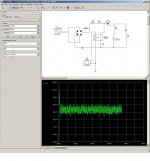Hello!
This forum is very exciting, I have always wanted to design an SMPS, but I never had a good reason to spend all the time and money needed to do it.
But now I have a great reason! I have a CNC mill which currently runs only at 7000 rpm. However, the manufacturer says if I can provide 190V at 12.5A, then I can run it at 10000 rpm, which is a very big deal in CNC machining!
So, there are so many choices with SMPS designs, I dont know where to start. I have looked at several hobbyist kilowatt SMPS designs, but none of them seem to be close enough to tweak.
I cant seem to find any multi-kw SMSP designs at this voltage (190VDC) from the major IC manufacturers. I.e. national webench poops outs well below my requirements.
I am an experienced EE but I have never done SMPS power supply design. But if I end up making something good here, I will definitely supply all my PCB layout, schematics, and BOM's so others could easily make it!
So my question is, could y'all recommend a particular topology or ballpark strategy to approach this? Or perhaps an existing design that is very close?
I am not in a rush and would like to enjoy this process.
So the specs are:
input: 110VAC @ 60Hz
output: 190VDC +/- 5V @ 12.5A (2375W)
thanks for any help!
This forum is very exciting, I have always wanted to design an SMPS, but I never had a good reason to spend all the time and money needed to do it.
But now I have a great reason! I have a CNC mill which currently runs only at 7000 rpm. However, the manufacturer says if I can provide 190V at 12.5A, then I can run it at 10000 rpm, which is a very big deal in CNC machining!
So, there are so many choices with SMPS designs, I dont know where to start. I have looked at several hobbyist kilowatt SMPS designs, but none of them seem to be close enough to tweak.
I cant seem to find any multi-kw SMSP designs at this voltage (190VDC) from the major IC manufacturers. I.e. national webench poops outs well below my requirements.
I am an experienced EE but I have never done SMPS power supply design. But if I end up making something good here, I will definitely supply all my PCB layout, schematics, and BOM's so others could easily make it!
So my question is, could y'all recommend a particular topology or ballpark strategy to approach this? Or perhaps an existing design that is very close?
I am not in a rush and would like to enjoy this process.
So the specs are:
input: 110VAC @ 60Hz
output: 190VDC +/- 5V @ 12.5A (2375W)
thanks for any help!
Last edited:


